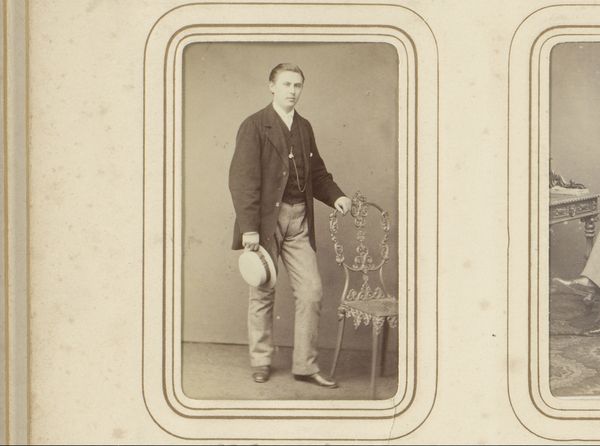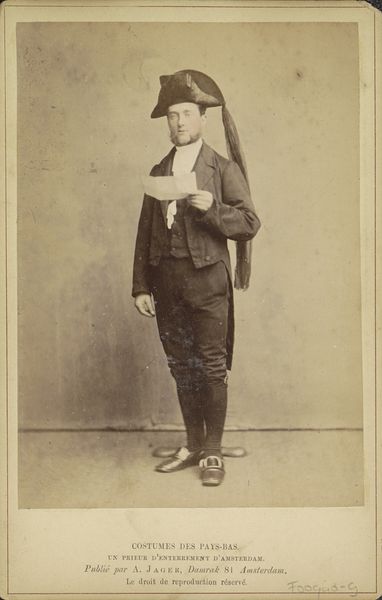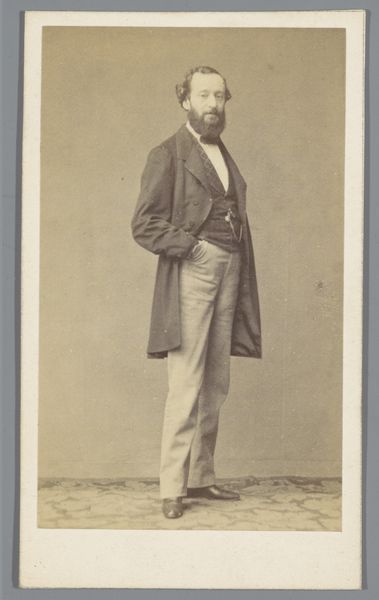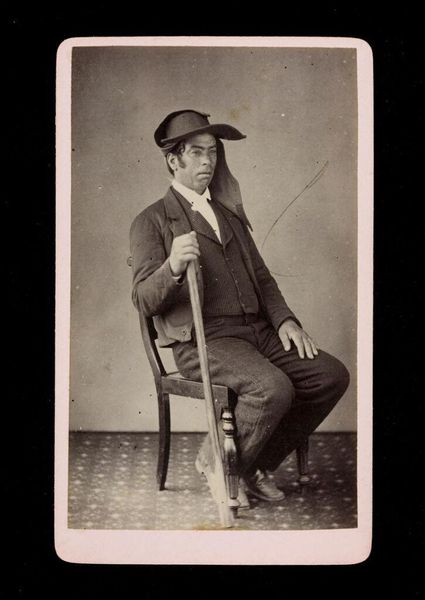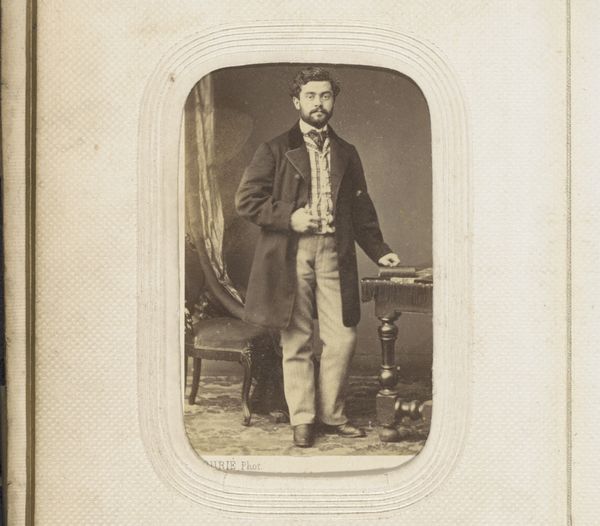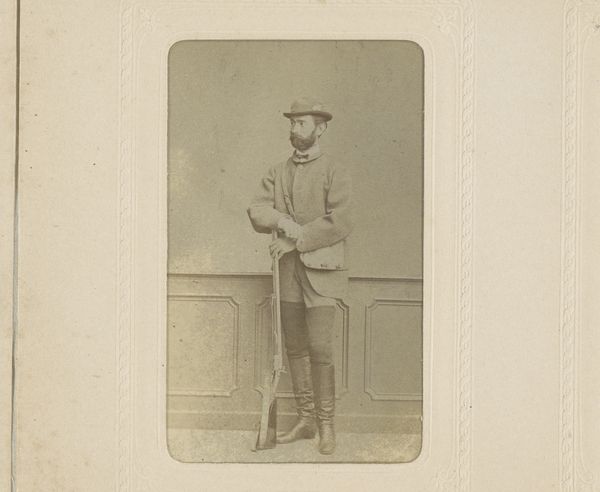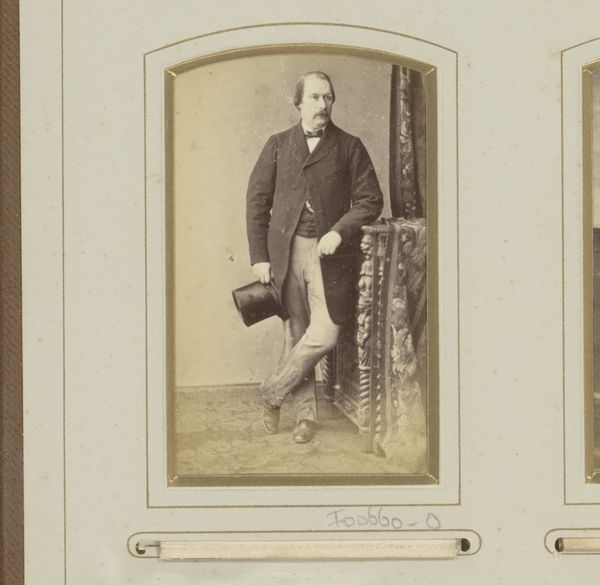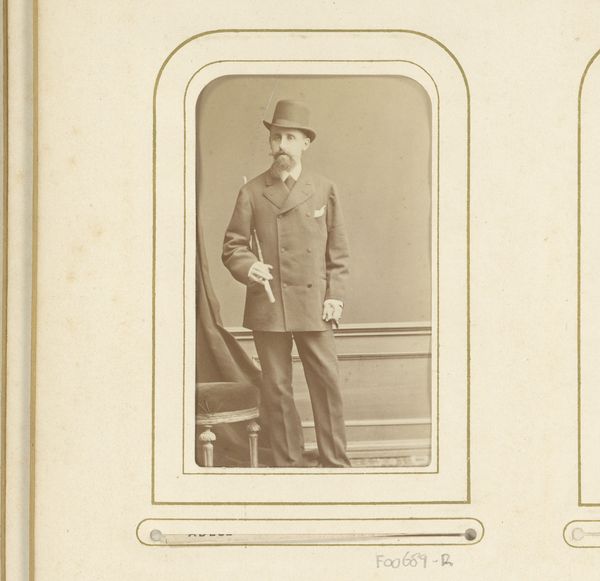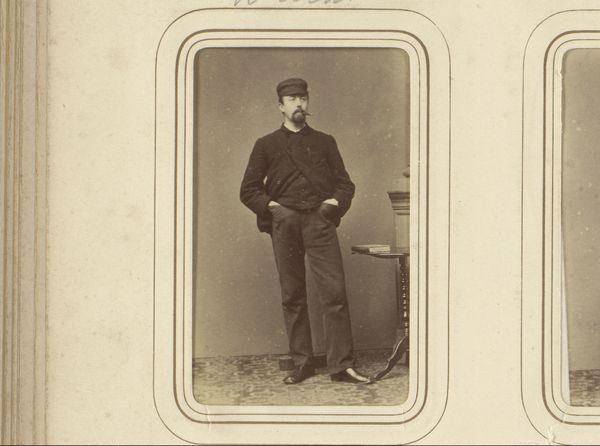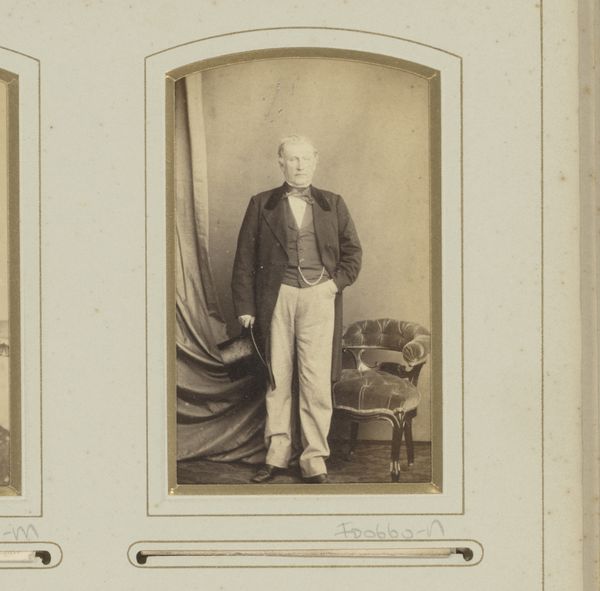![Portrait of a Man [verso] by George K. Warren](/_next/image?url=https%3A%2F%2Fd2w8kbdekdi1gv.cloudfront.net%2FeyJidWNrZXQiOiAiYXJ0ZXJhLWltYWdlcy1idWNrZXQiLCAia2V5IjogImFydHdvcmtzL2I5ZGUyNDZmLWNhYWItNDAxZi05MmIwLTI4NTk5YTFhYjMwYS9iOWRlMjQ2Zi1jYWFiLTQwMWYtOTJiMC0yODU5OWExYWIzMGFfZnVsbC5qcGciLCAiZWRpdHMiOiB7InJlc2l6ZSI6IHsid2lkdGgiOiAxOTIwLCAiaGVpZ2h0IjogMTkyMCwgImZpdCI6ICJpbnNpZGUifX19&w=3840&q=75)
photography, gelatin-silver-print
#
portrait
#
african-art
#
photography
#
historical photography
#
gelatin-silver-print
#
realism
Dimensions: image: 14.9 × 10.4 cm (5 7/8 × 4 1/8 in.) mount: 32.4 × 25.6 cm (12 3/4 × 10 1/16 in.)
Copyright: National Gallery of Art: CC0 1.0
Curator: This portrait by George K. Warren, taken around 1869, is striking. A gelatin-silver print capturing a man, formally posed. My first thought is that the sitter is rendered with great dignity and what looks like hard-won perseverance, although the sepia tones contribute to a muted effect, imbuing him with both weight and resilience. Editor: My reading is that it evokes something more. Look beyond the individual. Notice that a great number of photographic portraits during this period echoed neoclassical sculpture and that his expression resembles Roman veristic busts, portraying the gravity of age through wrinkles and a determined gaze. It’s the archetypal figure, an elder statesman distilled and imbued with a modern aesthetic. Curator: That’s a rich analogy. And yet, there's a tension created, one fueled, perhaps, by the sitter's somewhat incongruous attire— the slightly worn cap, and a heavy bag worn with visible labor – the elements of his social class, a sort of realism cutting through the Neoclassical overtones? It begs a dialogue with what symbols of labor this photograph would mean during reconstruction. Editor: Indeed. And if you analyze his direct gaze in conjunction with the relatively understated pose, a composition within the "Realist" and African Art movement where subjects are most important, you recognize its aesthetic statement of cultural self-definition. In this reading, a black photographer, his origins in mind, has placed agency onto this photograph. It serves the community and creates pride and solidarity between its people. Curator: Warren’s skill is evident not just in capturing a likeness, but also, his sensitivity to texture and light which underscores his statement; consider his boots, jacket, or satchel, juxtaposed against the plush, upholstered chair behind him. These were powerful tools in crafting a lasting cultural artifact. Editor: Tools, yes, that reinforce the narrative, creating that aesthetic of enduring legacy and, arguably, influence extending to our own time. To me, there's still an urgency in understanding how the photographic gaze like this can serve both social memorializing, yet still maintain space for the individual in complex symbolic terrain. Curator: Agreed. This is a compelling and insightful portrait of historical presence. It offers us a lens through which to view both artistry and history and continues to make for relevant conversations even now.
Comments
No comments
Be the first to comment and join the conversation on the ultimate creative platform.
